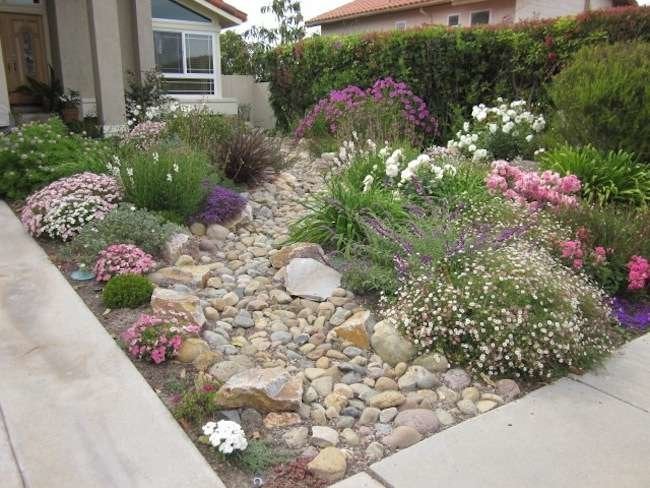

We may earn revenue from the products available on this page and participate in affiliate programs. Learn More ›
Home Advice You Can Trust
Tips, tricks & ideas for a better home and yard, delivered to your inbox daily.
Succulent Garden
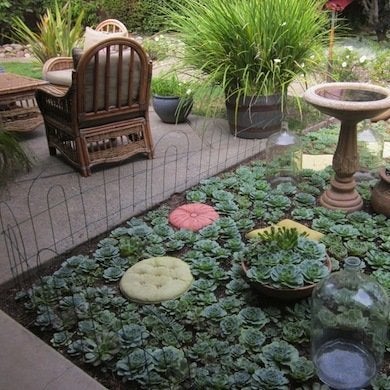
If you replace your turf grass with succulents, you don’t have to mow and you’ll do very little watering. Succulents are not fussy about soil as long as it drains well, and they add all kinds of color to your space. They’re an especially good option in arid climates, or in parts of the country where water for irrigation is an issue.
Creeping Perennials
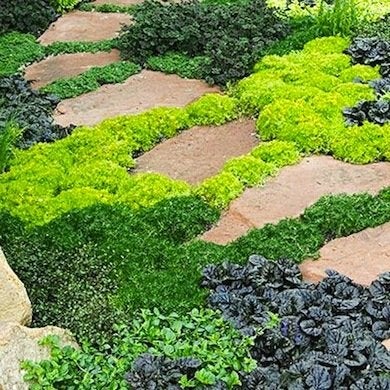
Ground-hugging perennials like vinca, thyme, and creeping Jenny make an excellent no-mow lawn cover. If you plant a mixture of spring and summer bloomers, you’ll have changing color throughout the season—a feast for the eyes. Available at Etsy; $2.99.
Hardscapes
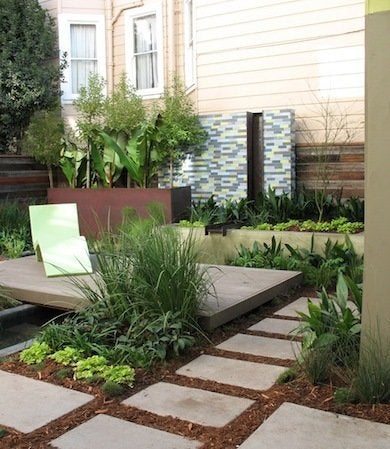
Many small and urban lawns can be replaced with hardscapes that provide relaxation and entertainment spaces just as enjoyable as a traditional grass yard. This patio is surrounded by container gardens and a flagstone walkway lined with lush plantings that serve up plenty of green garden pleasure.
Edible Forest Garden
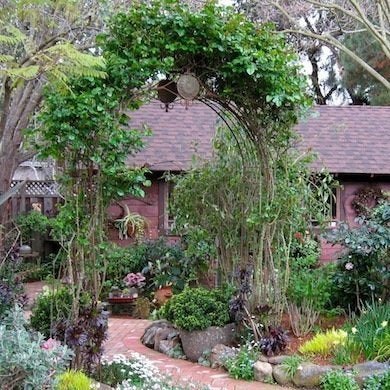
Instead of spending your yard maintenance time mowing, spend it cultivating plants and trees that will put food on your dinner table. Planting a woodland filled with edible trees, shrubs, plants, and vines is very rewarding. Using permaculture design, you can create a self-maintaining space that waters, fertilizes, and mulches itself.
Artificial Grass
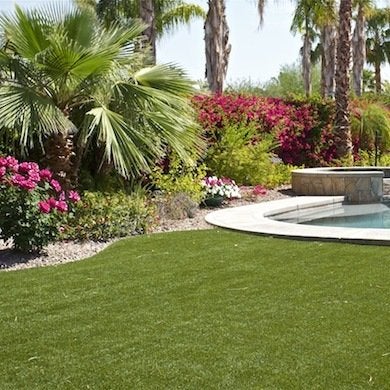
You may bristle at the thought of artificial turf as a replacement for turf grass, but artificial grass has come a long, long way. Today’s technology provides artificial turf that looks natural, but requires little to no maintenance other than periodic brushing and hosing down. And you can still grow live plants in your yard to balance the look. Available at Home Depot; $13.59.
Thyme
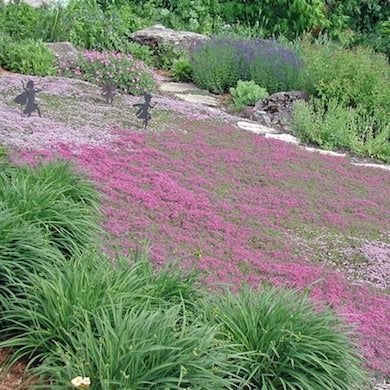
Establishing a creeping thyme lawn takes a few years but is well worth it when you reap the rewards. Thyme likes hot, dry temperatures, so it never needs watering. Go ahead and sell your mower, because thyme grows only about two inches tall. This hardy herb will be a carpet of blooms in early summer and green the rest of the season. Plus, it smells wonderful when you walk on it. Available at Burpee.com; $3.95.
Rock Garden
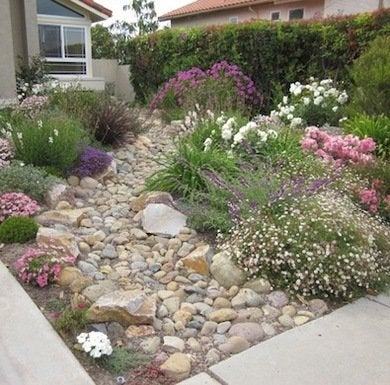
A rock garden can be an attractive alternative to a grass lawn. This one has a rock streambed as the centerpiece, with low-water perennials flanking and overflowing its sides. The garden’s natural look offers a lot of color and visual interest.
No-Mow Grass Mix
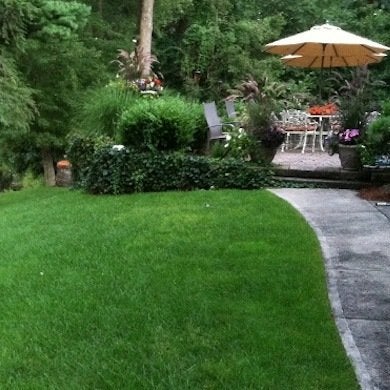
If you want less maintenance but still can’t give up on grass, there are real grass alternatives available. This low- to no-mow grass seed mix is a blend of red fescue, tall fescue, sheep fescue, and other grasses that produces a deep green, hardy ground cover that is still soft to the touch. It requires just one-quarter the water of regular turf grass and grows very slowly. Available at Home Depot; $34.98.
Wildflowers
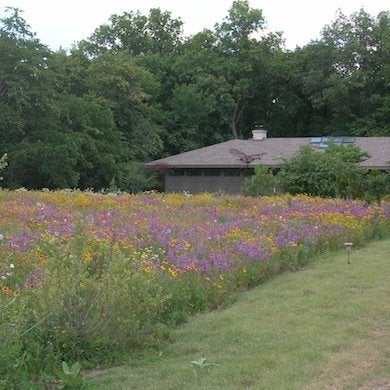
If you have a large property, planting a field of wildflowers is a great no-mow option. They adapt to their environment, tolerating both harsh winters and summer droughts, and need little to no irrigation. It may take a few years to get established, but a yard filled with wildflowers that bloom throughout the spring and summer can be quite beautiful. Available at Home Depot; $7.50.
Moss
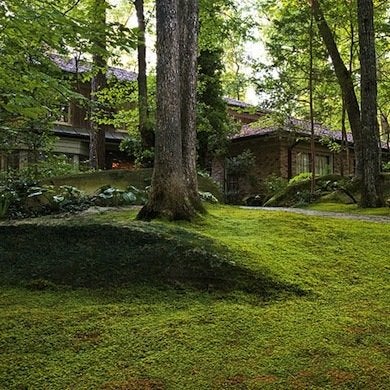
For a shady property, moss is an excellent no-mow grass substitute. It grows in almost any soil and requires minimal weeding, watering, and fertilizing. Mixing together several varieties will provide a changing collage of color throughout the season. Available at Burpee.com; $10.95.

Meet the 2025 Tools of the Year
After months of scouring the market and putting products through their paces, we’ve named the best of the best in new tools. There’s something for everyone, from veteran pros to average Joes.